Olena has worked in journalism for over 35 years, with 20 years as a correspondent in Donetsk Oblast for the Ukrainian newspaper – Facts and Comments. In this position, she witnessed the beginning of the armed conflict in Donbas. In the summer of 2014, Olena and her entire family had to flee from the occupation, which posed a severe threat to their safety. Like all journalists from Donetsk who worked for Ukrainian media outlets and all her fellow compatriots who did not hide their patriotic stance, they faced the consequences of Kremlin propaganda that sought to erase the identity of Ukrainians. Olena realized the need for Ukraine to defend its independence from Russia nine years ago, in January 2014.
Kremlin propaganda has had a lasting impact on the perception of Donbas natives, branding them as separatists. Olena and others have experienced the consequences of this misinformation campaign and remain committed to fighting for Ukraine’s independence and unity.
At the end of February, the war reached Donetsk, just like in Crimea, which Russia annexed in a matter of three weeks following an accelerated scenario.
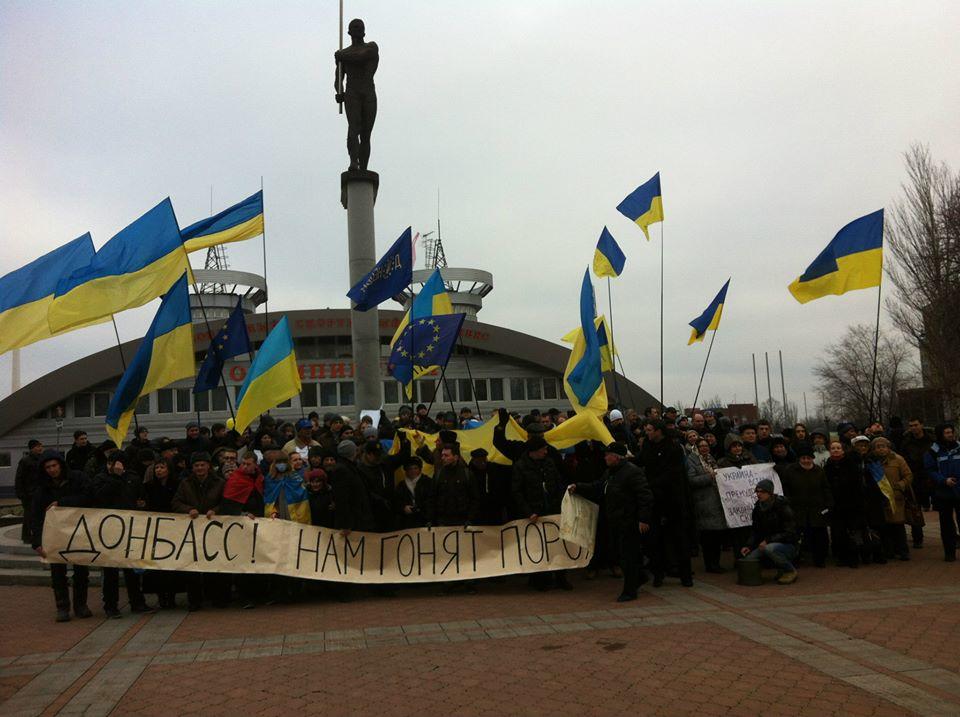
– Being in the epicenter of events, I came to the conclusion that a similar scenario of occupation of our lands was planned in the Kremlin long before these events began, and Moscow invested considerable money in its implementation. Olena Smirnova started covering events that became crucial for her native Donbas almost from the first days of the Donetsk Euromaidan. A small group of activists in Donetsk went out with Ukrainian and European Union flags to the Taras Shevchenko monument in the center of Donetsk, near the Donetsk Regional Administration, simultaneously with the Kyiv protesters on November 21, 2013.
After that day, people came here regularly, discussing events in the capital, singing Ukrainian songs, and gathering aid for those heading to the capital’s Maidan. Peaceful marches grew in size. In December 2013, the Party of Regions tried an “Anti-Maidan” rally in Donetsk, but few showed up.
During this time, there was no talk of the region joining the “Russian world” or being threatened by “banderites” (a term used to refer to Ukrainian nationalists). These slogans and fears emerged later when some high-ranking officials in the region started spreading misinformation to create a sense of danger and instability. They claimed that groups of “banderites” planned to cause trouble in Donbas.
In January 2014, during a press briefing at the regional administration, officials tried to justify their actions by saying they were taking measures to prevent provocations. They mentioned an alleged incident where regional traffic police officers stopped a convoy of buses carrying people from Western Ukraine who they claimed were planning to stage provocations in Donbas.
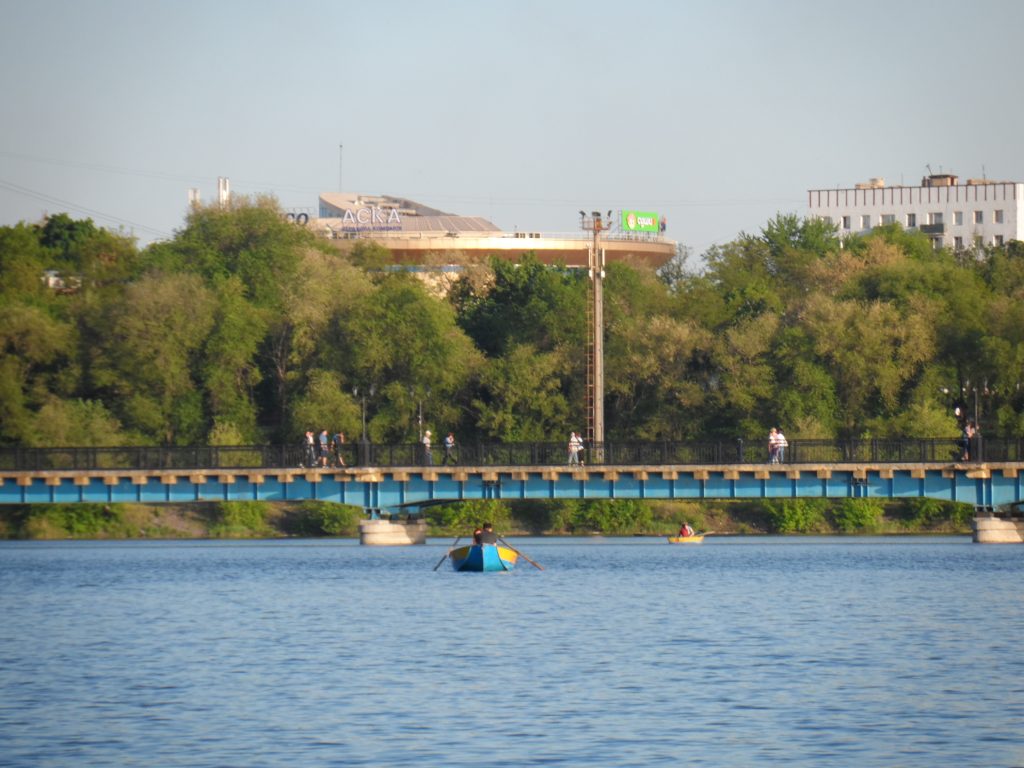
These events were early signs of the political tensions and divisions that eventually led to the outbreak of conflict and the Russian occupation in parts of Eastern Ukraine, including Donbas.
In January 2014, Olena had a shocking realization about the extent of Kremlin propaganda and its impact on Ukraine. It all began when her relative from Russia called her to inquire if Olena’s family was planning to move to her father, who was living in Russia at the time. Surprised by the question, Olena explained that Ukraine was going through some internal issues, but she saw no reason to leave her home in Donetsk. Curious about the situation, Olena decided to watch the Russian TV show Vesti to see what was being said about Ukraine.
After watching the program, she was horrified by the propaganda being spread, portraying Ukraine as a part of Russia and suggesting that Ukrainians should voluntarily join the Russian empire, much like Tatarstan or the Mari-El Republic.
Dissenters were labeled as “Nazis” and “Bandera followers,” and threats of retribution were made against them.
The propaganda aimed to erase Ukraine from the map and its people from the earth, presenting a distorted view of the country and its inhabitants. Olena was disturbed by the realization that millions of viewers trusted the Russian state TV, which was fueling division and hatred towards Ukraine.
She contacted her relative again, asking how Ukrainians living in their own country were causing any harm to Russians. Her relative acknowledged that they personally didn’t see any issues, but the Russian government seemed to have a different perspective, as portrayed on television.
These events took place on the eve of January 16, 2014, highlighting how propaganda was already deeply influencing the narrative and perceptions about Ukraine, setting the stage for the later events that led to the conflict and Russian occupation in parts of Eastern Ukraine.
And for some reason, it coincided that on this day, the “titushky” emerged from among the sportsmen and boxers of the city of Horlivka, who were organized and brought to Donetsk by local collaborators, and they started attacking activists and journalists gathering at the Donetsk Euromaidan.
*The term “titushky” refers to a group of paid thugs and provocateurs who authorities or individuals often employ with vested interests to disrupt protests, demonstrations, and other civil activities. These individuals are known for engaging in violent and aggressive behavior, attacking peaceful protesters, journalists, and opposition figures.
– To me, these actions seemed to be part of a staged script for a gradual occupation written in the Kremlin. Alongside these hooligans, there were also some elderly women who, under the command of organizers, pelted us with buckwheat, coins, and dirt while shouting, “Sellout press!” Initially, a local journalist from Horlivka, Oleksiy Petrov, recorded these “people’s protests,” but soon, he joined the ranks of the “DPR” militants (so-called “Donetsk People’s Republic”). Strangely, the attacks did not target the journalists from Russian television channels who arrived in Donetsk later, – the journalist testifies. Then, on January 22, 2014, during the celebration of Ukraine’s Unity Day, I clearly understood that Donbas was destined for occupation. The “titushky” pushed the people who came to the Shevchenko monument to commemorate the occasion into a small square on the opposite side of the street. There, they started physically attacking activists and journalists, pouring green antiseptic and acidic red liquid on them, forcibly taking away Ukrainian flags and burning them.
These violent acts and aggression demonstrated that the situation was becoming increasingly dangerous for peaceful protesters and journalists who were simply covering the events. It became evident that Donbas was heading toward a dark future of occupation and conflict.
Directors of aggressive propaganda and their assistants should be tried alongside war criminals.
The “performances” for Russian propaganda TV shows about so-called “popular” protests against the “Kyiv junta” (a term used in Russian propaganda to refer derogatorily to the Ukrainian government that came into power following the Euromaidan protests in 2014) in Donetsk from February 2014 were filmed almost daily. Against this backdrop, Kremlin’s “Goebbels” (a reference to Joseph Goebbels, Hitler’s Minister of Propaganda) – Kiselev, Solovyov, Simonyan, Keosayan, Skabeeva, and Popov – diligently instilled in their viewers the idea that the residents of Crimea and Donbas, as well as the entire South-East of Ukraine, wanted autonomy and saw themselves becoming part of Russia in the near future.
These were “performances” with a substantial budget. For instance, mass crowds were brought in for rallies and marches where these demands were voiced.
Before 2014, there was hardly a significant number of autonomy supporters here.
Kiselev, Solovyov, Simonyan, Keosayan, Skabeeva, and Popov were part of the Russian media apparatus and consistently presented a distorted narrative to their viewers. They manipulated footage and staged “performances” to make it appear as if the residents of Crimea, Donbas, and the broader South East of Ukraine were demanding autonomy and seeking to become part of Russia. In reality, prior to 2014, there was very little support for autonomy in the region.
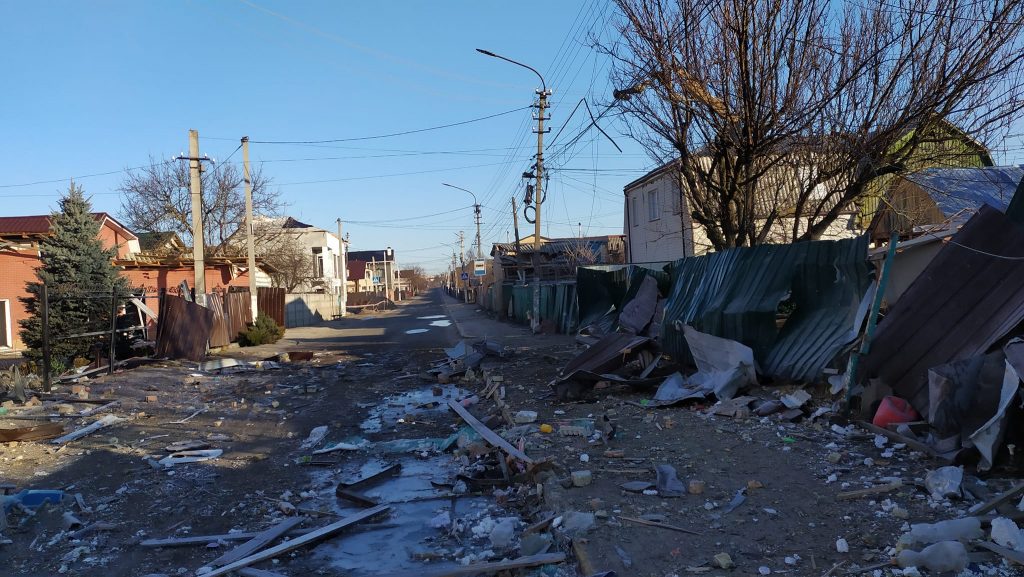
During the events in Donetsk in 2014, pro-Russian rallies were filled with a significant display of flags representing the yet-to-be-declared “Donetsk People’s Republic,” St. George ribbons, and Russian tricolors. These symbols were not prevalent in the region before this time.
Pro-Russian protesters, led by local collaborators, were joined by a diverse crowd, including individuals with criminal backgrounds. As early as February 2014, they were chanting “Russia” at the command of the organizers. By March 1, 2014, these protesters attempted to take over the regional administration building and raised a Russian flag on its flagpole.
Olena, along with other journalists, observed those who directed the mass crowds, but they were unable to intervene physically. For example, during a pro-Russian rally on March 1, Russian tricolor flags were unfurled with a gesture from “journalist” Veronika Bogma from Russia, who was reporting for the Vesti channel. She also orchestrated scenes on March 3, depicting protesters breaking into a closed parking lot near the regional administration building. The then-chief of police for the region, Roman Romanov, accompanied the propagandist inside the captured Donetsk regional administration. Romanov also escorted separatist protesters, led by “people’s governor” Pavel Gubarev, into the session hall, where they occupied the building and established their headquarters.
Journalists from Russian media outlets deliberately misrepresented events and facts in their reports. For instance, a former operator from Russia’s Channel One, Ivan Romanov, admitted in 2017 to the Russian TV channel Dozhd that he received instructions from Moscow on how to present the news. He revealed that, in some cases, the media falsely portrayed peaceful events as provoked by Ukrainian ultranationalists, following directions from their editorial office.
– I believe that those responsible for the falsification of information, including scriptwriters, directors, propagandist journalists from Russia, participants in mass rallies, as well as Ukrainian officials and law enforcement personnel who took an oath, should face criminal responsibility alongside war criminals, — convinced journalist Olena Smirnova.
The kidnapping and killing of civilians in the occupied territory occurred on a daily basis.
During the spring of 2014, working as a journalist in the region for Ukrainian media or any media outlets not loyal to the occupiers became increasingly difficult and dangerous. Journalists had to disguise themselves, wearing inconspicuous hats and dark glasses, to avoid being recognized by collaborators. Soon, everyone had to adopt pseudonyms and hide their credentials as separatists launched a real hunt for journalists and activists of the patriotic resistance.
— People speaking Ukrainian were detained directly at the militants’ checkpoints. The abducted individuals suffered torture, and hundreds of people were mutilated or killed while in captivity. The fate of many who went missing in 2014 remains unknown to this day, — Olena testifies.
Despite the annexation of Crimea in March and the outbreak of what was then politically referred to as the “anti-terrorist operation” (ATO) in Donbas from mid-April 2014, with northern cities of Donbas under occupation until July 2014, supporters of a united Ukraine in Donetsk continued to hold anti-war protests. Simultaneously, Donbas resistance activists called on the government in Kyiv, including the Security Service of Ukraine, the National Security and Defense Council, the Ministry of Internal Affairs, and presidential candidates visiting the region ahead of the May 25, 2014 elections. They pleaded for the deployment of the Ukrainian army to Donetsk and expressed readiness to join in the fight for Ukraine. However, most of the recipients responded ambiguously, saying, “Act according to the situation,” without providing further guidance on how to proceed in such circumstances.
My choice came at a high cost, but for many of my fellow countrymen, there was no choice at all.
When Russian militants fully occupied Donetsk in July 2014, Olena realized that delaying her departure from the city could jeopardize her freedom. By that time, many of her colleagues had already left, and Donbas resistance activists had joined the first Ukrainian volunteer battalions, some of whom are still on the frontlines.
— I left Donetsk with the awareness that the image created by Kremlin propaganda would label Donbas natives as separatists for years to come. I experienced this personally. Even after the full-scale invasion by aggressors on February 24, 2022, many of her compatriots failed to realize that the war began in Donbas not because of the “old ladies of Donetsk calling Putin” but due to its geographical location near the Russian border. It was convenient for the aggressor country to create footholds for further expansion near its borders. Russia had implemented similar scenarios before, creating quasi-republics, like Transnistria, Abkhazia, and South Ossetia, close to its borders, — emphasized the journalist. Moreover, at that time, the majority of residents in both Crimea and Donbas were Russian-speaking. The occupiers used the slogan “Protect Russian speakers!” as a cover-up, and this narrative persists to this day. Even though over 1.5 million people fled Donbas and Crimea in 2014 from the “protectors,” the majority of whom were Russian-speaking, in 2022, many more Ukrainians fled from “liberators,” including many Russian-speaking individuals.
Olena herself is among those who fled. She speaks Russian because she completed school and university in Russia, where Ukrainian language and history were not taught. — However, upon my return to Donetsk in 1986, I discovered a lot about the history of my country and the Donbas region, which was not mentioned in the Soviet Union’s schools or universities. Working in Donbas before the collapse of the USSR and later during the years of Ukraine’s independence, I learned about the Ukrainian liberation movement, including Donbas, the Holodomor, and the dissidents, — the journalist recalls. She witnessed mining strikes and the establishment of the Vasily Stus Museum. This experience made her realize that they were kept in an artificially created “parallel reality” during their childhood.
In the occupation, there are still people who share her belief in victory.
In the summer of 2014, Olena’s family had to leave Donetsk, realizing it would be for good. They rented a house with partial amenities near Kyiv for quite some time until they moved into their own home just a year and a half before Russia’s full-scale invasion.
Last year, when Olena’s family left Irpin, where they had lived for the past eight years as forced settlers with a “veteran” status, they understood that it could be forever or for many long years. However, Irpin found itself in the path of the enemy towards Kyiv. In the early days of the war, the city experienced intense shelling.
— I witnessed the impact of a missile striking the residential area near our house with my own eyes. At that moment, my neighbors and I were charging our phones under the canopy at the building’s entrance, where the electricians managed to connect us to the power station. Seeing the destruction caused by the missile, we quickly gathered our belongings and decided to leave,” says the speaker. — I initially left behind anything that could be dangerous during a potential encounter with Russian forces, including my award for professional excellence, the ‘Order of Princess Olga’ of the 3rd degree. The likelihood of such an encounter increased every day. When we left the city on March 1, 2022, the road was still open, but by March 6, it was already blocked, and Irpin was surrounded and partially occupied. The city was finally liberated on March 28, 2022, but not everyone who took the risk managed to survive until then…
In Ivano-Frankivsk, Olena and her family found refuge through the help of Donetsk friends who had relocated there in 2014. Finding suitable accommodation was challenging due to the influx of displaced people, which caused rental prices to skyrocket. Nevertheless, the welcoming community of Prykarpattia, a region in western Ukraine, provided them with a warm reception.
Olena expresses her heartfelt gratitude, particularly to the Center for Journalistic Solidarity of the National Union of Journalists of Ukraine (NUJU), which has provided them with both humanitarian and advisory support. The center also offers opportunities to engage in the community’s public and cultural life and provides workspace for journalists who lack suitable conditions at home.
Thanks to the caring support of many people in Ivano-Frankivsk, Olena finally managed to overcome another significant challenge she had been wanting to address for a long time, but never had the opportunity to do so.
She shares how she initially struggled to speak Ukrainian but has now mastered a decent “Frankivsk” version of the language, with a smile on her face. Recently, they traveled to Irpin and plan to return once the situation becomes safer. Despite the positive experiences in other places, Olena still dreams of eventually returning to Donetsk, a city she deeply misses and refuses to accept its occupation.
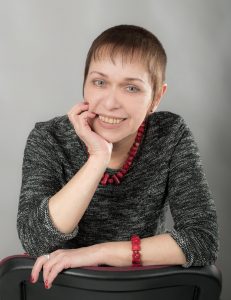 – I cannot accept that we still haven’t been able to liberate the territories where people are trapped, unable to relocate from their homes. On the Donbas, there are still people who have been living under occupation for nearly nine years, yet they continue to wait for the Ukrainian Armed Forces and believe in Ukraine’s victory. They find the strength to support not only themselves but also my hope for our triumph in this war, – Olena sums up.
– I cannot accept that we still haven’t been able to liberate the territories where people are trapped, unable to relocate from their homes. On the Donbas, there are still people who have been living under occupation for nearly nine years, yet they continue to wait for the Ukrainian Armed Forces and believe in Ukraine’s victory. They find the strength to support not only themselves but also my hope for our triumph in this war, – Olena sums up.
This series, titled Executed Free Speech, is created as part of a project Drawing Ukrainian And International Audience’s Attention To Serious Violations Of Human Rights And Crimes Against Journalists And Mass Media By The Russian Federation, which is performed by the National Union of Journalists of Ukraine, with support from the Swedish non-profit organization Civil Rights Defenders.
JOURNALISTS ARE IMPORTANT. Stories of Life and Work in Conditions of War is a cycle of materials prepared by the team of the NUJU with the support of the Swedish human rights organization Civil Rights Defenders.
#CRD
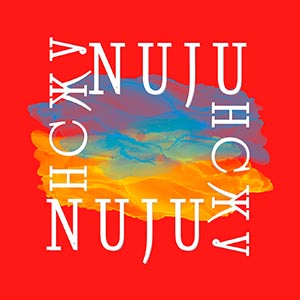
 THE NATIONAL UNION OF
JOURNALISTS OF UKRAINE
THE NATIONAL UNION OF
JOURNALISTS OF UKRAINE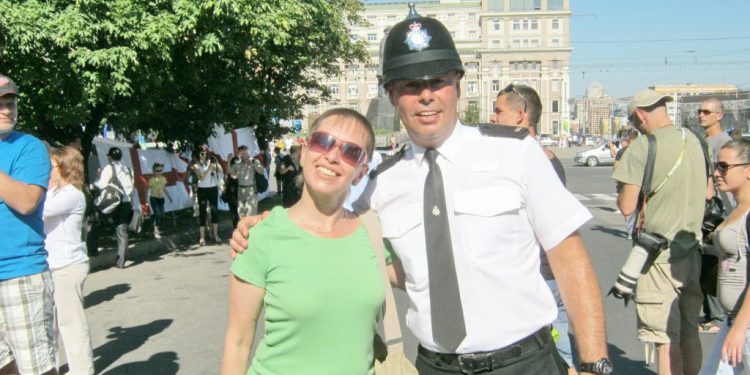
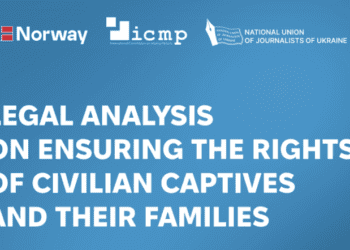
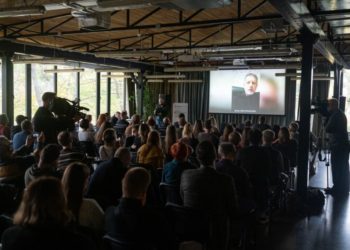
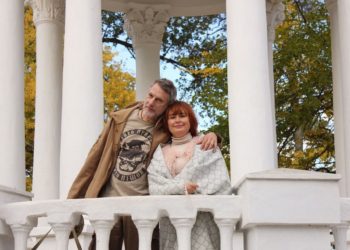
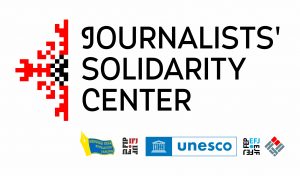
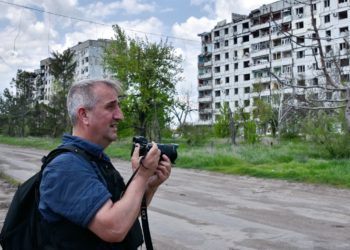







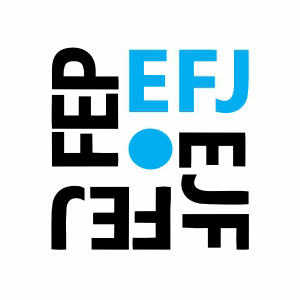



Discussion about this post